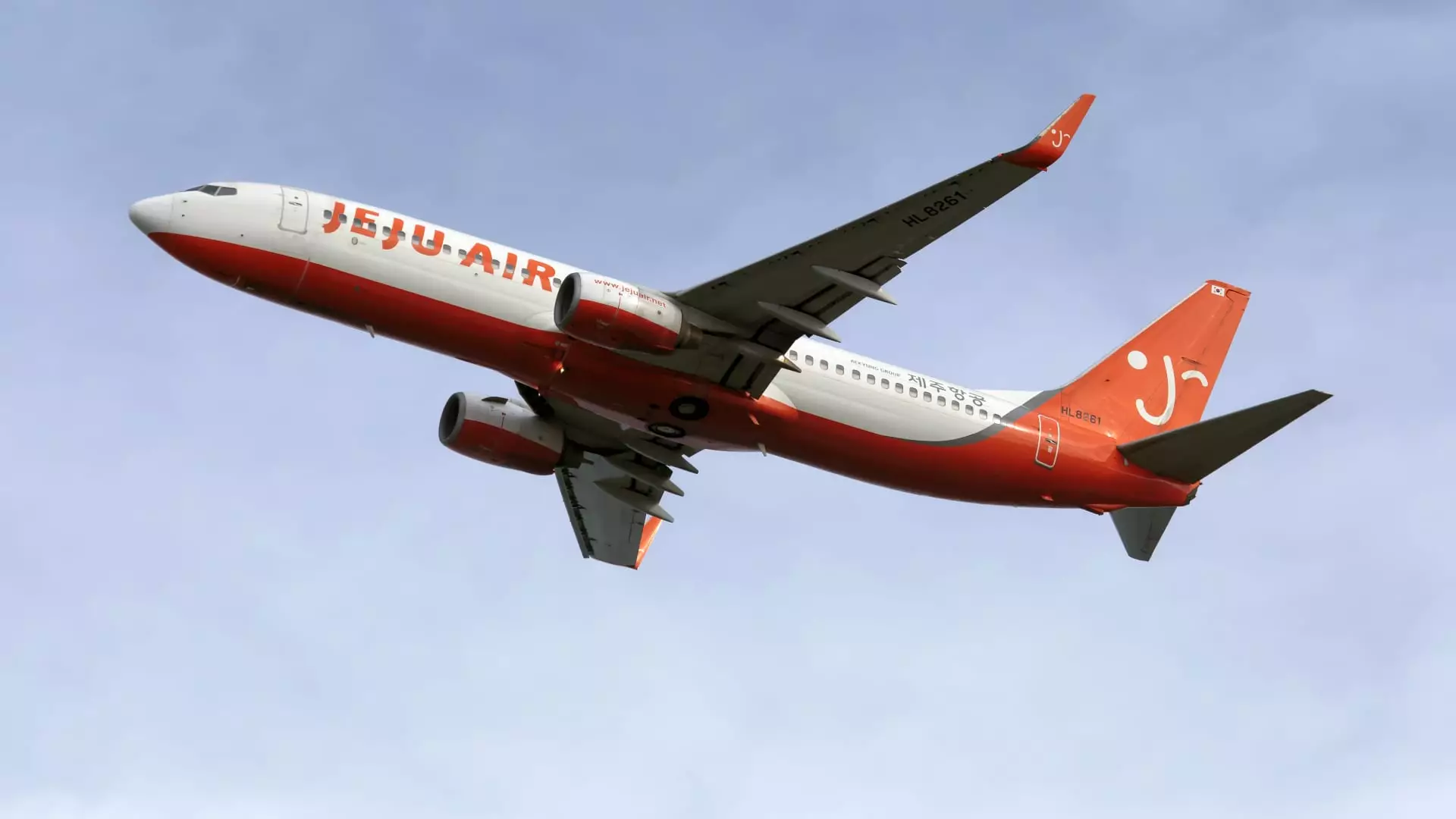On a fateful day, what was meant to be a routine flight ended in disaster when Jeju Air Flight 7C2216 conducted a belly landing at Muan International Airport, igniting flames that consumed nearly all but two of the 181 souls on board. This event marks one of South Korea’s deadliest aviation tragedies in recent years, prompting an urgent investigation into the causes behind the tragic outcome. The unfolding crisis has elicited not just national grief, but also a significant examination of aviation safety protocols concerning the widely used Boeing 737-800, the aircraft model involved in this devastating incident.
In response to the incident, South Korea’s acting president, Choi Sang-mok, mandated an immediate review of the nation’s Boeing 737-800 fleet. Given the model’s reputation for reliability, it seems counterintuitive that such a significant mishap could occur. Data suggests that nearly 4,400 Boeing 737-800s are in operation globally, making up 17% of the commercial jet fleet. Furthermore, this model has an average operational age of 13 years, which, while significant, does not alone warrant cause for alarm about its structural integrity.
Despite these statistics, the accident raises questions about the design and operational protocols associated with these aircraft. What initially seemed like an anomaly has prompted a critical look at the potential causes behind the landing gear failure—a situation calling for a meticulous investigation.
An investigation into aviation accidents is intricate, often consuming over a year to establish all factors leading to the event. In this case, experts are considering several theories, but the primary enigma remains: why did the landing gear not deploy as the aircraft prepared to land? Despite the possibility of hydraulic failure, pilots typically have the option to lower gear manually, leaving room for deeper speculation.
Richard Aboulafia, a notable voice in aerospace consulting, downplays the prospect of discovering design flaws within the Boeing 737-800 model, suggesting the issue could be operational or related to specific circumstances rather than inherent design problems. This perspective offers some reassurance, yet the gravity of the situation demands that no stone be left unturned.
One of the more alarming theories posed by aviation safety investigators is that a bird strike may have contributed to the tragic events. The possibility that an aircraft could lose engine function at a critical moment is a serious concern; if true, the implications underscore the urgent need for rigorous measures to protect against such strikes during critical phases of flight. Moreover, the assumption that emergency protocols could have been bypassed in a moment of crisis paints a dire picture of the challenges pilots may face in unforeseen scenarios.
Jeff Guzzetti, with extensive experience in air safety investigation, emphasized that the circumstances at the moment of crisis were crucial. Had the aircraft not met with an unforgiving wall at the end of the runway, the situation could have ended with far fewer casualties, contributing yet another layer of complexity to the inquiry.
As the National Transportation Safety Board (NTSB) takes the helm of the investigation—alongside a coalition involving Boeing and the Federal Aviation Administration (FAA)—it becomes clear that this incident will have lasting ramifications for aviation safety and regulatory practices. Given that the manufacturing and certification of the aircraft occurred in the United States, the collaboration between U.S. and South Korean officials is crucial for a comprehensive understanding of the factors at play. This tragic event serves as a poignant reminder of the vulnerabilities inherent in air travel, emphasizing that, despite advancements in technology, the human element and environmental factors significantly influence outcomes.
As investigators sift through evidence and testimonies, the aviation community will be watching closely, eager for insights that may transform how safety is prioritized in aviation standards, ensuring that such a catastrophe never repeats itself.

